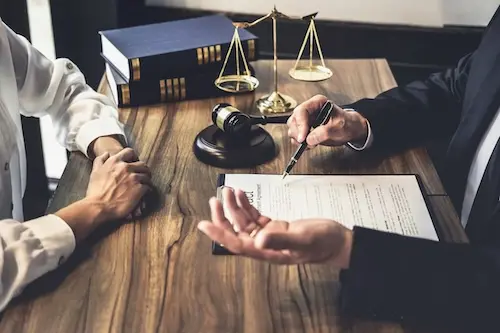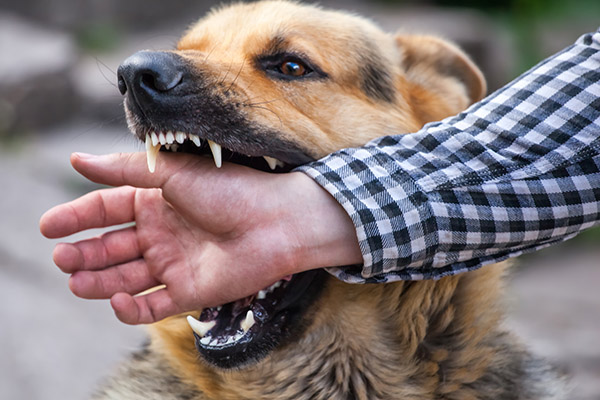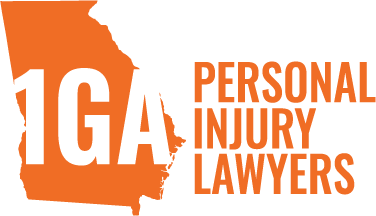Understanding Pedestrian Right-of-Way Laws and Injury Claims in Georgia
Pedestrian accidents can result in serious injuries and costly medical expenses. In Georgia, pedestrian right-of-way laws play a crucial role in protecting the safety of pedestrians while crossing roadways. Whether you are a pedestrian or a driver, understanding these laws is essential to prevent accidents and ensure justice if an incident occurs.
In this blog, we will cover pedestrian right-of-way laws in Georgia, the causes of pedestrian accidents, and how working with an experienced Georgia personal injury lawyer can help you secure the compensation you deserve.
What is Pedestrian Right-of-Way?
Pedestrian right-of-way refers to the legal right pedestrians have to safely cross roadways. Understanding this right is essential for both pedestrians and drivers to prevent accidents and ensure safety on Georgia’s roads.
Pedestrian Right-of-Way in Marked Crosswalks
In Georgia, pedestrians have the right-of-way at marked crosswalks. When a pedestrian is within a marked crosswalk, drivers must yield and allow them to cross safely. This applies regardless of traffic signals, meaning vehicles must stop to let pedestrians pass.
Pedestrian Right-of-Way in Unmarked Crosswalks
Pedestrians also have the right-of-way in unmarked crosswalks, which are typically located at intersections. While drivers are still required to yield to pedestrians, pedestrians must exercise caution. They should be aware of their surroundings, as drivers may not always expect pedestrians in unmarked crosswalks.
The Role of Traffic Signals
Traffic signals help regulate pedestrian movement. A green pedestrian signal allows a pedestrian to cross the street, while a red pedestrian signal indicates they must wait. When no pedestrian signals are present, pedestrians must cross according to traffic lights, with vehicles stopping to yield the right-of-way when necessary.
Pedestrian Right-of-Way and Vehicles
Motor vehicles are required to yield the right-of-way to pedestrians when they are crossing at intersections or marked crosswalks. However, pedestrians must also follow traffic laws, such as crossing only at designated areas and waiting for signals when appropriate.
Exceptions to Pedestrian Right-of-Way
Although pedestrians generally have the right-of-way, there are certain exceptions. For instance, pedestrians should avoid crossing the road when it is unsafe, such as when a vehicle is approaching at high speed or when there are no clear crosswalks. Additionally, pedestrians must not suddenly leave a curb and step into traffic unexpectedly.
Key Pedestrian Right-of-Way Laws in Georgia
Georgia law defines when pedestrians have the right-of-way and when drivers must yield. Understanding these laws helps ensure safety for everyone on the road.
Pedestrian Right-of-Way at Marked Crosswalks
Under Georgia law, pedestrians always have the right-of-way at marked crosswalks. This means drivers must stop when a pedestrian is crossing at a marked crosswalk, even if the traffic light is green. Failure to yield in these situations can lead to legal consequences for drivers.
Pedestrian Right-of-Way at Unmarked Crosswalks
At unmarked crosswalks, pedestrians still have the right-of-way, especially when crossing at intersections. However, drivers are required to yield only when the pedestrian is within the crosswalk. Pedestrians should exercise caution in these situations, as drivers may not always see or expect them.
Pedestrian Signals and Traffic Signals
Georgia law requires drivers to obey pedestrian signals. If a pedestrian signal is green, the pedestrian has the right to cross. When there is no pedestrian signal, the general traffic signal governs pedestrian movement. If the signal is red, pedestrians must wait, but vehicles must still yield to pedestrians in crosswalks.
Yielding to Pedestrians in Parking Lots and Driveways
Pedestrians have the right-of-way in parking lots and driveways, as these areas are considered part of the public roadway. Drivers must yield to pedestrians in these spaces, even if the pedestrian is not in a marked crosswalk. Failure to yield can result in an accident, which may lead to liability for the driver.
Pedestrian Right-of-Way in Specific Situations
Certain situations require additional attention. For example, blind pedestrians, who may be using a white cane or guide dog, always have the right-of-way. Additionally, pedestrians are required to cross at designated crosswalks when available and should avoid crossing roadways suddenly or outside of these areas.
Pedestrian Accidents in Georgia: Causes and Liability
Pedestrian accidents in Georgia are often caused by a combination of driver behavior, pedestrian actions, and environmental factors. Understanding the causes and determining liability are crucial for injury claims.
Common Causes of Pedestrian Accidents
Pedestrian accidents can occur for many reasons. Common causes include distracted driving, such as texting or using a mobile phone while driving. Speeding, failure to yield the right-of-way, and driving under the influence of alcohol or drugs also contribute to accidents. Additionally, pedestrians not using crosswalks or not paying attention to traffic signals can increase the risk of accidents.
Distracted Driving and Pedestrian Safety
Distracted driving is one of the leading causes of pedestrian accidents in Georgia. Drivers who are texting, talking on the phone, or engaging with in-car technology may fail to notice pedestrians in crosswalks or near intersections. This negligence often leads to severe accidents and injuries.
Pedestrian Actions Contributing to Accidents
While drivers are often at fault, pedestrians can also contribute to accidents. Pedestrians who suddenly leave the curb, cross outside of designated crosswalks, or ignore pedestrian signals are more likely to be involved in accidents. Pedestrians should always use crosswalks, obey traffic signals, and be alert when crossing roadways.
Determining Liability in Pedestrian Accidents
In Georgia, liability for pedestrian accidents is based on negligence. If a driver fails to yield the right-of-way or violates traffic laws, they can be held responsible for the accident. However, if the pedestrian is found partially at fault, Georgia’s comparative negligence laws allow for reduced compensation based on the degree of fault. A personal injury lawyer can help determine liability and protect the pedestrian’s rights in an accident claim.
Legal Considerations in Pedestrian Accident Claims
When a pedestrian is injured in an accident, they may be entitled to compensation for medical expenses, lost wages, and pain and suffering. However, the outcome of a pedestrian accident claim depends on factors such as fault, witness statements, and evidence from the accident scene. Working with a personal injury attorney can help ensure that victims receive fair compensation.
Understanding Your Pedestrian Accident Claim
If you’ve been involved in a pedestrian accident in Georgia, understanding the claims process is important for securing the compensation you deserve.
Steps to Take After a Pedestrian Accident
After a pedestrian accident, the first priority is to seek medical attention. Even if injuries seem minor, getting checked by a doctor ensures proper documentation. Next, it’s important to report the accident to a police officer, who will create an official accident report. Gathering witness statements and any evidence from the accident scene, such as photographs or traffic camera footage, can strengthen your case.
Filing a Pedestrian Accident Claim
Once medical treatment is received and the accident report is filed, the next step is to file a pedestrian accident claim. In Georgia, this may involve working with your insurance provider or the driver’s insurance company. It’s critical to ensure that the claim includes all relevant details, such as medical expenses, lost wages, and pain and suffering. An attorney can help ensure that the claim is properly filed and backed with adequate evidence.
Determining Fault in Pedestrian Accidents
Georgia follows a comparative negligence rule, which means that fault in a pedestrian accident can be shared between the driver and the pedestrian. If the driver failed to yield the right-of-way or was distracted, they may be primarily at fault. However, if the pedestrian crossed outside a crosswalk or failed to follow traffic signals, they may be partially responsible. An experienced personal injury lawyer will help determine fault and ensure that any compensation accounts for shared responsibility.
Types of Compensation in Pedestrian Accident Claims
Pedestrian accident victims can seek compensation for various damages, including medical bills, rehabilitation costs, lost wages, and pain and suffering. In some cases, punitive damages may also be awarded if the driver’s actions were particularly reckless, such as driving under the influence. Your personal injury lawyer will help you understand what types of compensation you may be entitled to based on the circumstances of the accident.
Role of a Personal Injury Lawyer in Your Claim
A personal injury lawyer can provide essential guidance in a pedestrian accident claim. From investigating the accident scene to negotiating with insurance companies, a lawyer will work to ensure that you receive fair compensation. Legal representation is especially important when dealing with complex issues like determining fault or if the driver’s insurance company attempts to minimize your claim. A personal injury lawyer’s expertise can help ensure your rights are fully protected throughout the claims process.
Contact an Experienced Georgia Personal Injury Attorney Today!
If you or a loved one has been injured in a pedestrian accident, it’s important to have an experienced legal team on your side to guide you through the claims process. At 1Georgia Injury Lawyers, we are dedicated to protecting your rights and helping you secure the compensation you deserve for medical bills, lost wages, and pain and suffering.
Contact us at (800) 800-8000 for a free case consultation today!







